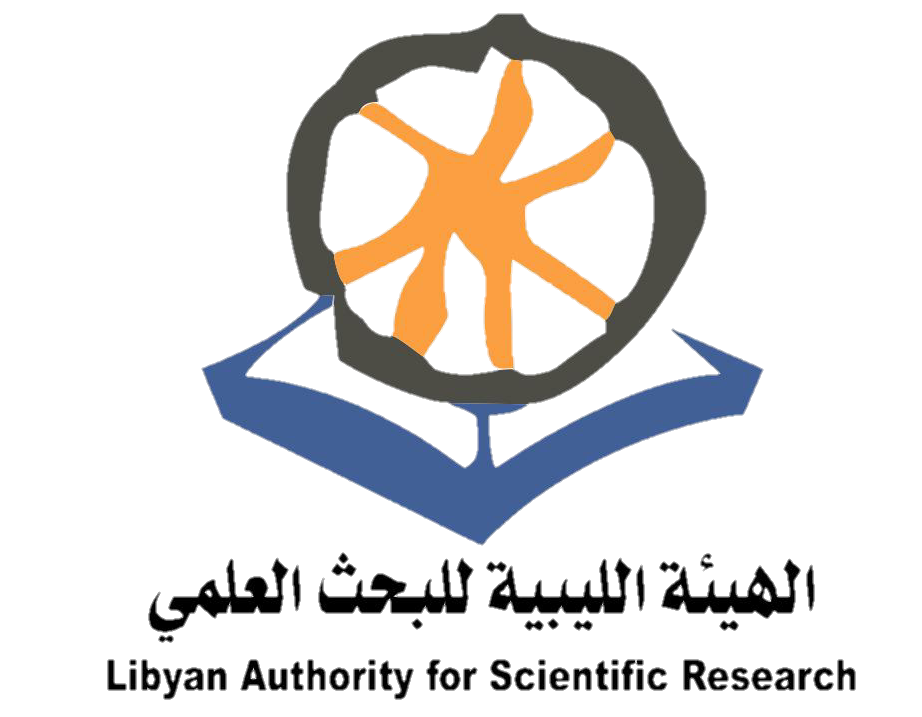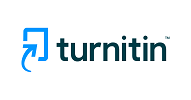Evaluation Of Hepatoprotective Activity Of Aqueous Extract Of Indian Costus Roots On Paracetamol Induced Hepatotoxicity In Albino Mice
DOI:
https://doi.org/10.37375/bsj.vi10.2347الملخص
القسط الهندي من النباتات التي تستخدم كثيرا في الطب الشعبي في علاج الكثير من الامراض مثل السرطانات وامراض الدم والامراض التنفسيه وقد كان الهدف من هذا البحث هو دراسة تاثير مستخلص جذور القسط الهندي علي السميه الكبديه المستحدثه في الفأران بواسطة عقار الباراسيتامول واعتمدت الطريقه علي تقسيم الفأران لخمس مجموعات هي ا ,ب ,ج ,د ,ه حيث كانت المجموعه أ هي المجموعه الضابطه وحقنت المجموعه ب بالجرعه العلاجيه لعقار الباراسيتامول وهي 14 ميكروجرام لكل كيلو جرام من وزن الجسم بينما حقنت المجموعه ج بالجرعه السميه وهي 85 ميكروجرام لكل كيلو جرام من وزن الجسم داخل الغشاء البروتيني لمدة اربع ايام وجرعت المجموعتين د و ه بالمستخلص المائي لجذور القسط الهندي عن طريق الفم لمدة اربع ايام ثم حقنت في اليوم الخامس بعقار الباراسيتامول بالجرعات العلاجيه للمجموعه د والجرعه السميه للمجموعه ه لمدة اربع ايام ثم ذبحت الفأران وتم ارسال عينات الدم الي المختبرلفحص انزيمات الكبد وهي انزيم ناقلة الالانين وانزيم ناقلة الاسبرتات وانزيم الفوسفاتاز القلوي واخذت عينات من الكبد لاجراء الفحص النسيجي وتبين من النتائج ان المستخلص المائي لجذور القسط الهندي سبب في انخفاض الاثار السميه علي الكبد التي سببها عقار الباراسيتامول في المجموعات د و ه مقارنتاً بالمجموعتين ب و ج التي لم تجرع بمستخلص القسط الهندي مايشير الي ان القسط الهندي يمكن ان يستخدم كعلاج للسميه الكبديه الناتجه عن تعاطي الادويه ويحتاج لاجراء المزيد من الابحاث.
المراجع
: References:
Baiaan H. Al Saadi, Shoaa H. AlHarbi, Sabrin R. M. Ibrahim, Amal A. El-Kholy, Dina S. El-Agamy, and Gamal A. Mohamed(2018): Hepatoprotective activity of Costus Speciosus against Paracetamol -Induced liver Injury in mice : Afr J Tradit Complement A ltern Med., 15 (2): 35-41
Bannwarth B, Pehourcq F 2003: Pharmacologic basis for using paracetamol: pharmacokinetic and pharmacodynamic issues. Drugs. 2003 ;63 Spec No 2:5-13.
Bavarva,J.H. and Narasimhacharya, A. V. (2008). Antihyperglycemic and hypolipidemic effects of Costusspeciosus in alloxan induced diabetic rats. Phytother. Res., 22: 620-626.
Bergmeyer, H.U., M. Horder and R. Rej. (1986a). Approved recommendation on IFCC methods for the measurement of cata-lytic concentration of enzymes. Part II. IFCC method for aspartame aminotransferase. J. Clin Chem. Clin. Biochem. 24: 497-508
Bergmeyer, H.U., M. Horder and R. Rej (1986b). Approved recommendation on IFCC methods for the measurement of cata-lytic concentration of enzymes. Part III. IFCC method for alanine aminotransferase. J. Clin. Chem. Clin. Biochem. 24: 481-495
Boyd EH, Bereczky GM (1966) . Liver necrosis from paracetamol. Br J Pharmacol 1966; 26: 606- 614.
Bhuyan B., Zaman K. 2008. Evaluation of hepatoprotactive activity of rhizomes of Costusspeciosus(J. Konig.) Smith. Pharmacologyonline; (3): 119-126.
Cohen, S.D. and Khairallah, E.A. (1997). Selective protein arylation and acetaminophen-induced hepatotoxicity. Drug Metab. Rev. 29:59-77.
Cranswick N, Coghlan D (2000). Paracetamol efficacy and safety in children: the first 40 years. Am J Ther 7135–141.
Dahlin D, Miwa G, Lu A, Nelson S. Nacetylp- benzoquinone imine (1984): Acytochrome P-450-mediated oxidation product of acetaminophen. Proc
Natl AcadSci ; 81: 1327-1331.
Deni B. Encyclopaedia of Herbs, The Royal Horticulture Society 2008; P: 181.
Devi, V. and Urooj, A. (2010). Nutrient Profile and Antioxidant components of CostusspeciosusSm. and CostusigneusNak. Indian J. Nat. Prod. Resour. 1:116-118.
Ferner RE, Dear JW, Bateman DN. Management of paracetamol poisoning. BMJ. 2011 Apr
19;342:d2218.
Forrest JA, Clements JA, Prescott LF (1982). "Clinical pharmacokinetics of paracetamol". Clin Pharmacokinet. 7 (2): 93–107.
Graham GG, Davies MJ, Day RO, Mohamudally A, Scott KF (2013) :The modern pharmacology of paracetamol: therapeutic actions, mechanism of action, metabolism, toxicity and recent pharmacological findings". Inflammopharmacology. 21 (3): 201–32.
Gupta RK. Medicinal and Aromatic Plants with Colour Plates (2010): Traditional and Commercial Uses Agrotechniques Biodiversity Conservation (HB) ; CBS: 234-499.
Hazai, E., Monostory K., Bakos, A., Zacher, G. and Vereczkey, L. (2001). About hepatotoxicity of paracetamol overdose. Orv. Hetil. 42:345-349.
Kaplowitz N. Idiosyncratic drug hepatotoxicity. Nat Rev Drug Discov 2005; 4: 489-499.
Kulkarni, D. (2011). Acute paracetamol toxicity - A case report. Indian J. Appl. Res. 3:466-468.
Kang, K.S. (2013). Abnormality on liver function test. Pediatr. Gastroenterol. Hepatol. Nutr. 16:225-232.
Lesko S M, Mitchell A A(1999). The safety of acetaminophen and ibuprofen among children younger than two years old. Pediatrics 104e39.
Lijuan, W., Kupittayanant, P., Chudapongse, N., Wray, S. and Kupittayanant, S. (2011). The effects of wild ginger, Costusspeciosus (Koen Smith) rhizome extract and diosgenin on rat uterine contractions. Clin. Pharmac., 10: 2815-2885.
McCloskey P, Edwards RJ, Tootle R, Selden C, Roberts E, Hodgson HJ (1999). Resistance of three immortalized human hepatocyte cell lines to acetaminophen and N-acetylpbenzoquinoneimine toxicity. J Hepatol ; 31: 841-851.
McGill MR, Jaeschke H (2013)."Metabolism and disposition of acetaminophen: recent advances in relation to hepatotoxicity and diagnosis".Pharm Res. 30 (9): 2174–87.
Nahak G, Kantasahu R (2011). Free radical scavenging activity of rhizome of
CostusSpeciosus (KOEN) J. E. SM. Int J Ins Pharm and L Sci 1; 1:62-67.
National Poisons Information Service. TOXBASE. Paracetamol. 2017 [internet publication].
Prescott, L. F. (1980). Kinetics metabolism of paracetamol and phenacetin. Br. J. Clin. Pharmac., 10: 2915-2985.
Rajasekharan. S, Pushpangadan. P and Biju, S.D,1996 .Folk Medicines of Kerala - A Study on Native Traditional Folk Healing Art and its Practitioners in Jain, S.K. (ed) Deep Publications, New Delhi India pp167-172.
Ricciotti E, FitzGerald GA (2011): Prostaglandins and inflammation. Arterioscler Thromb Vasc Biol. May;31(5):986-1000.
Shaw, L.M., J.H. Stromme and J.L. Lon-don. (1983). Approved recommendation on IFCC methods for the measurement of cata-lytic concentrations of enzymes. Part 4. IFCC method for gamma-glutamyl transferase. J. Clin Chem. Clin. Biochem. 21: 636-646
Singh, P., Mishra, G., Khosa, R., Srivastava, S., Jha, K. and Srivastava, S. (2011). Anthelmintic activity of aerial parts of Costus speciosus. Int. J. Green Pharm. 5:325-328
Srivastava, S., Singh, P., Jha, K. K., Mishra, G., Srivastava, S. and Khosa, R. L. (2013). Anti inflammatory, analgesic and antipyretic activities of aerial parts of Costusspeciosus Koen. Indian J. pharm. Sci.,
75: 83-88.
Srivastava, S., Singh, P., Jha, K.K., Mishra, G., Srivastava, S. and Khosa, R.L. (2011). Costusspeciosus (Keukand): A review. Der Pharmacia Sinica. 2:118-128
Sivarajan, V. V. and Balachandran, I. (1994). Ayurvedic drugs and their plant sources. Oxford & IBH Publishing Co. Pvt. Ltd. New Delhi., pp 439.
Tushar, Basak S, Sarma GC, Rangan L. (2010):Ethnomedical uses of Zingiberaceous plants of Northeast India. J Ethnopharmacol. 2010 Oct 28; 132(1):286-96.
Vaishwanar I, Kowale CN (1979). Effect of two ayurvedic drugsShilajeet and Eclinol on changes in liver and serumlipids produced by carbontetrachloride. Ind J Exp
Biol ; 14: 58-61.
Verma, N. and Khosa, R.L. (2009). Evaluation of protective effect of ethanolic extract of Costusspeciosus(Koen.) Sm. rhizomes of carbon tetrachloride induced hepatotoxicity in rats. Nat. Prod. Rad. 8:123-126.
Vermeulen, N.P.E., Bessems, J.G.M. and Vandestreat, R. (1992).Molecular aspects of paracetamol-induced hepatotoxicity and its mechanism-based prevention. Drug Metab. Rev. 24:367-407.
Vijayalakshmi MA, Sarada NC(2008). Screening of Costusspeciosus extracts for antioxidant activity. Fitoterapia ;Nadkarni KM. Indian MateriaMedica. Bombay Popular Prakashan, India, 2009; 385-386. 5. 79: 197-198.














